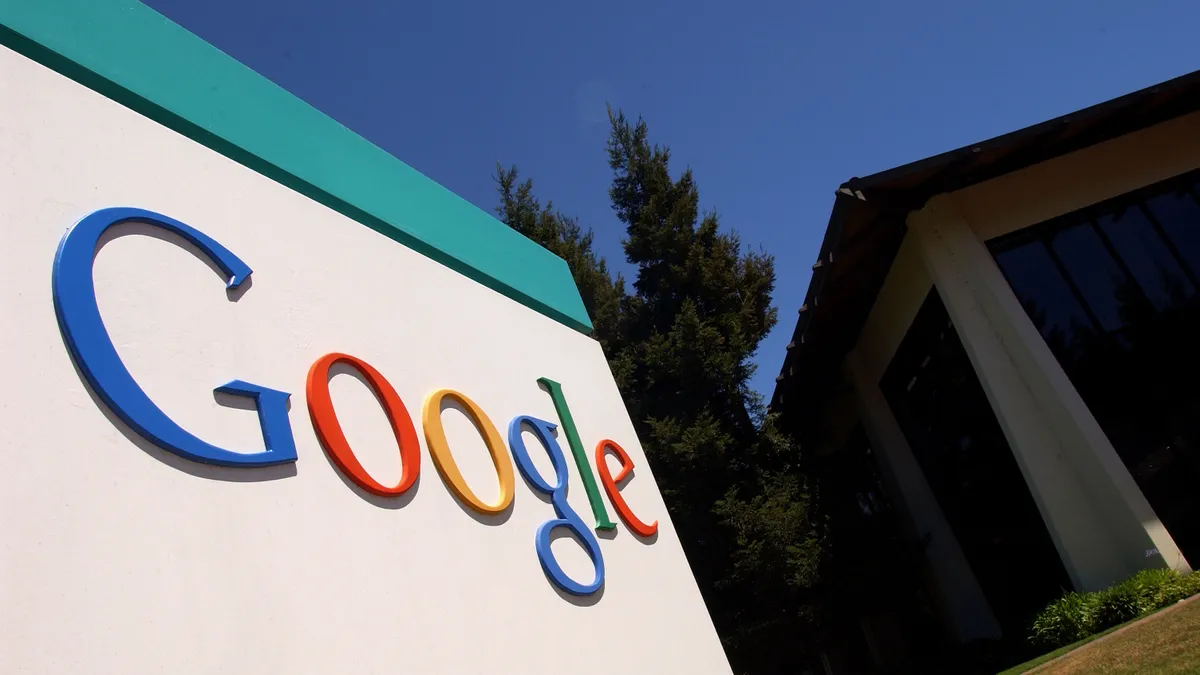Dive Brief:
- Google’s advertising revenue shrunk for the second consecutive quarter, reflecting a sustained slowdown on YouTube and the impact of broader macroeconomic headwinds, according to an earnings report from parent company Alphabet.
- The drop in overall ad revenue was relatively small, with the firm’s total take for the first quarter coming in at $54.55 billion versus $54.66 billion during the year-ago period. But YouTube ad revenue slid approximately 3% year-over-year to $6.69 billion.
- Google is betting on new areas, including short-form video and generative artificial intelligence (AI), to spur a turnaround. Those sectors have excited investors but are not as well monetized or proven with users as other aspects of the search giant’s sprawling business.
Dive Insight:
Google’s narrative remained relatively unchanged in Q1 amid continued struggles with advertising, particularly related to YouTube, and marketer pullbacks in the face of a rocky economy. Despite the sluggishness, Google still beat analyst expectations on earnings and revenue. In terms of bright spots, its cloud-based computing segment turned a profit, though it lags behind key competitors.
In the chase for new revenue growth, the company is prioritizing YouTube Shorts, the platform’s answer to TikTok, along with connected TV, commerce and subscription services. Generative AI has also become a top agenda item, with plans to significantly overhaul search in ways that will impact advertisers and publishers.
Executives reiterated that Shorts has been successful in drawing in viewers and creators, but is not as well-monetized as YouTube’s long-form offerings. Other platforms chasing TikTok’s popularity have contended with similar issues, where redirecting resources toward a comparatively immature format results in a near-term drag on performance.
“We’re seeing strong watch time growth,” said Google Chief Business Officer Philipp Schindler of Shorts during a call discussing the Q1 results with investors. “Monetization is also progressing nicely.”
Regardless, YouTube’s revenue was down 3%, marking the third straight quarter of declines for the segment. Google’s network ad revenue also shrunk more than 8% YoY due to pullbacks in advertiser spend. Search and other was up about 2% to $40.36 billion, which Schindler attributed to healthy demand from the travel and retail verticals, though he also called out declines in finance, media and entertainment. But search faces new vulnerabilities as rival Microsoft Bing draws more attention.
“YouTube revenues declining again, and Search and Other revenues rising less than 2% reflect the reality that Google's core business is facing the most serious challenges it has encountered in quite some time,” said Insider Intelligence senior analyst Max Willens in emailed comments.
Microsoft was early to jump on the generative AI trend thanks to a partnership with ChatGPT developer OpenAI. The tech firm has revamped Bing to include more AI elements powered by the software, putting pressure on Google — historically the category leader — to keep up. The New York Times earlier this month reported that Samsung was considering switching the default search engines on its smartphone devices from Google to Bing, which reportedly sent Google into a scramble.
Google introduced its own large language model called Bard in Q1 to some mixed reviews. Alphabet more recently merged the AI division DeepMind with Google’s Brain unit dedicated to AI research to form a consolidated group called Google DeepMind.
Espousing the benefits of AI, Google CEO Sundar Pichai said it will improve Google’s helpfulness for users, empower creators on platforms like YouTube and benefit businesses and partners of all sizes. As Google tests alternatives to third-party cookies, it has also claimed that AI-powered advertising products are not as affected by the loss of the popular targeting tool that is set to be deprecated next year.















